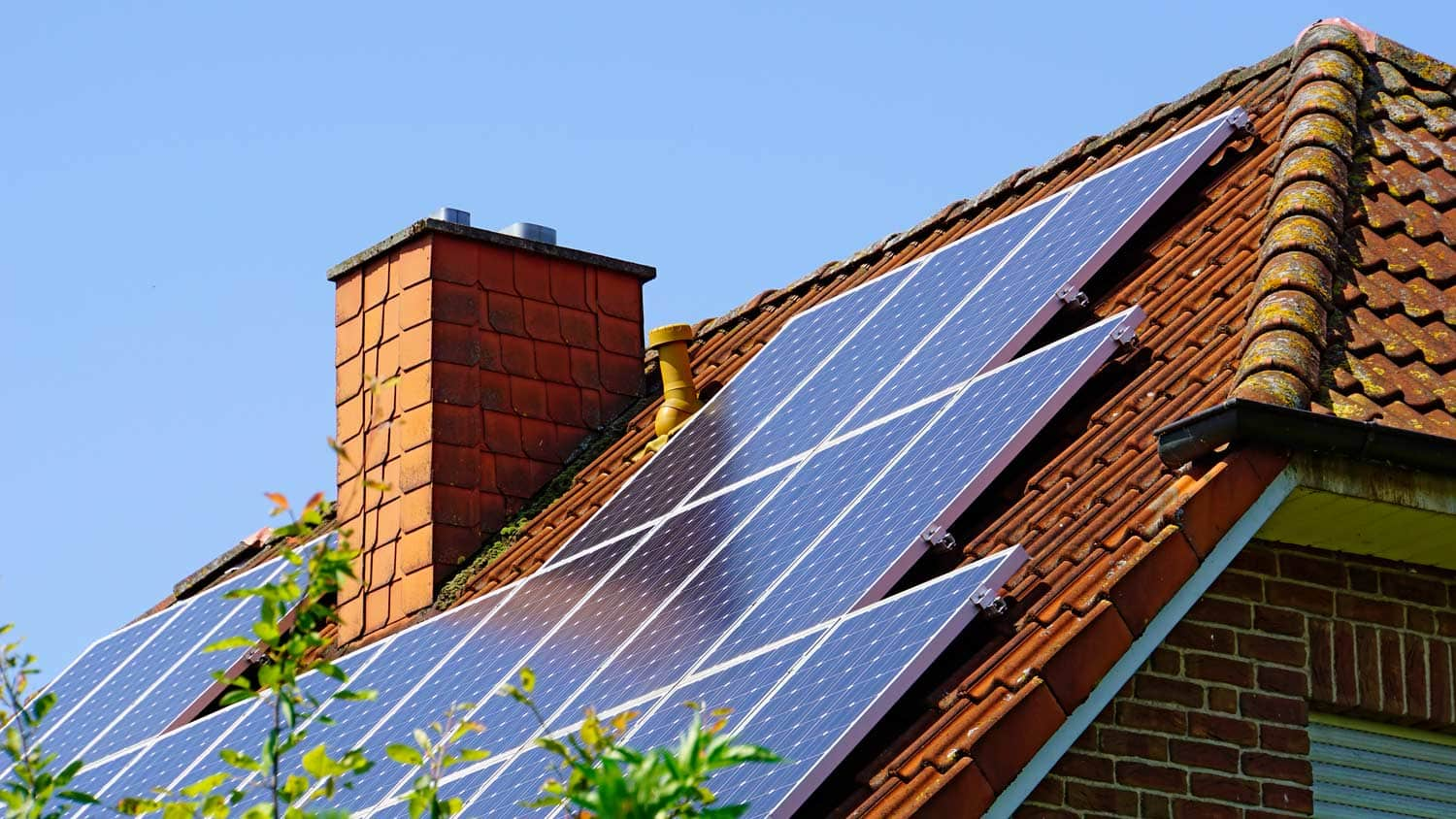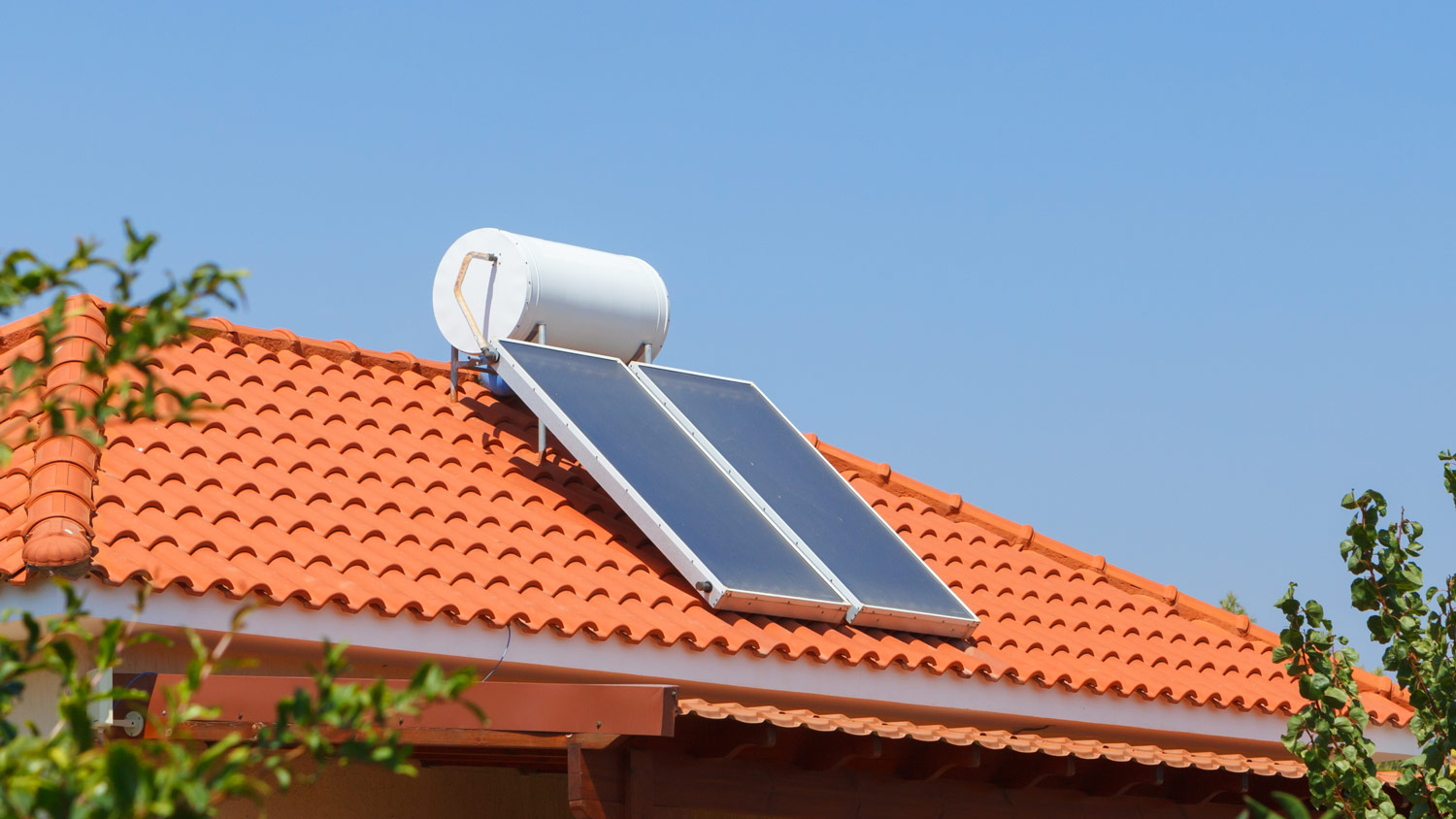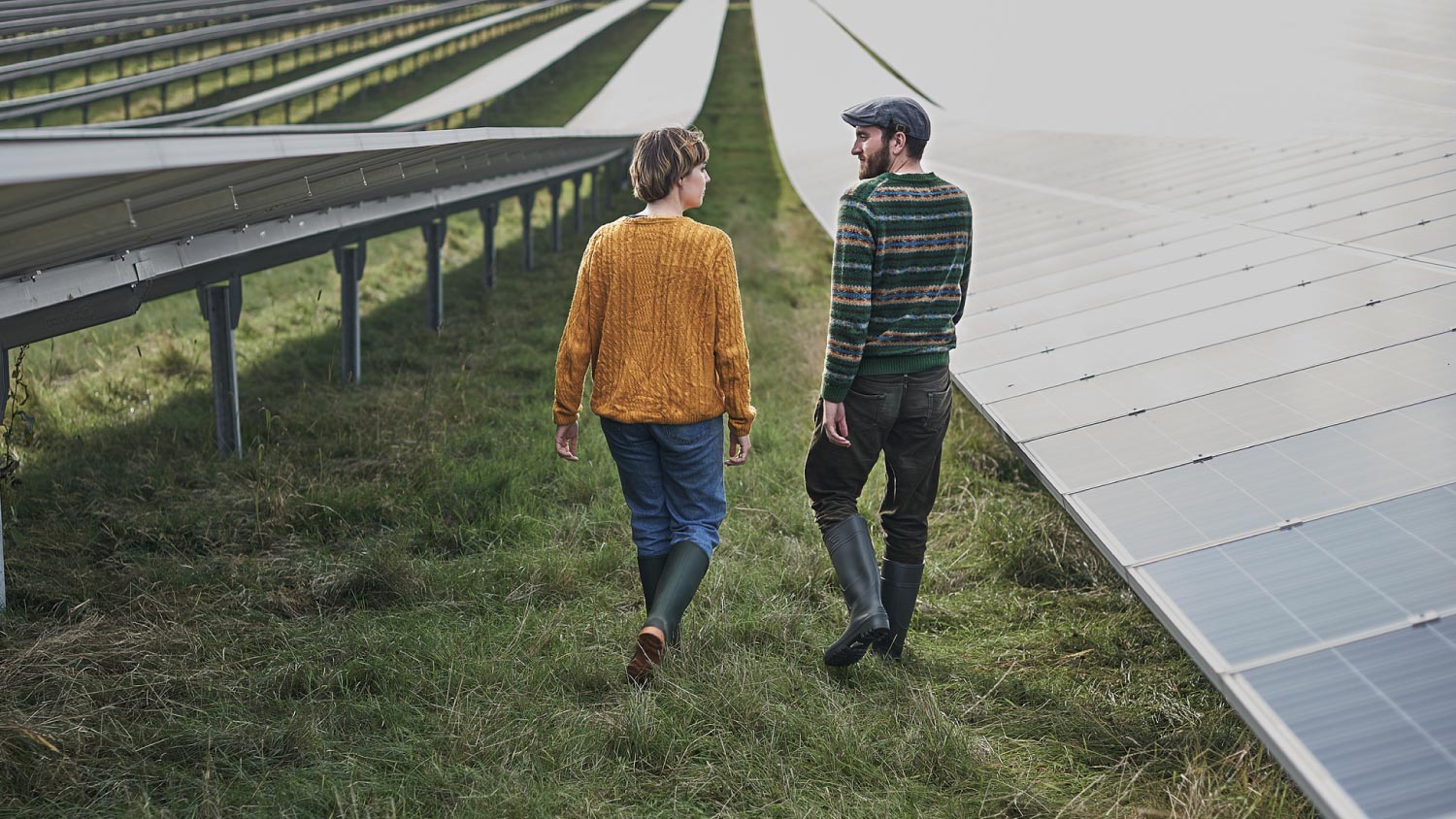
Solar battery costs depend on the size of your system, labor, and capacity. Learn how much you could pay for batteries for home solar systems.
Solar panel installation cost averages $27,172, with most homeowners paying between $18,351 and $36,399. Your price depends on system size, panel type, and labor.


Solar panel installation means adding a photovoltaic (PV) energy system to your home, mounted on your roof or property.
System size, panel type, and labor needs are the biggest cost drivers, along with your roof’s condition and any upgrades.
Solar panels can sharply reduce your monthly energy bills and provide a strong return on investment over time.
Installing solar panels costs $2.50 to $3.50 per watt and can increase your home’s value, making it more appealing to future buyers.
Always check for available incentives or tax credits, which can significantly reduce your out-of-pocket costs.
This article was created using automation technology and thoroughly fact-checked and edited by an Angi Editor in accordance with our AI policy.
Solar panel installation cost averages $27,172 for a standard home, with most homeowners spending between $18,351 and $36,399. Prices vary based on system size, panel type, and installation complexity. Expect to pay $2.50 to $3.50 per watt installed, with larger systems offering better value per watt.
Upgrading your home with solar panels can lower your energy bills and add value to your property. This guide covers everything you need to know about solar panel installation cost, so you can budget with confidence.
The size of your solar panel system, measured in kilowatts (kW), has the biggest impact on your total installation cost. The more panels you need, the higher the price—though the cost per watt often drops as you install larger systems. Most residential homes use systems between 4 kW and 10 kW, depending on energy usage and available roof space.
A smaller system may fit a compact home or a household with low energy needs, while larger families or those with high electricity use may need more panels. When sizing your system, consider your past utility bills and any future plans, such as adding an electric vehicle or expanding your home.
| System Size (kW) | Number of Panels | Cost Range |
|---|---|---|
| 4 | 10–12 | $8,000–$13,000 |
| 6 | 15–18 | $12,000–$19,000 |
| 8 | 20–24 | $15,000–$23,000 |
| 10 | 25–30 | $18,000–$27,000 |
The type of solar panel system you choose affects both the installation cost and your long-term benefits.
Grid-tied systems connect directly to your local utility, while off-grid and hybrid systems include battery storage for backup power. Roof-mounted arrays are common, but ground-mounted systems work well for properties with ample land. Some homeowners opt for integrated solar shingles for a more seamless look, though these cost more than traditional panels.
Adding battery storage or specialized inverters, like microinverters or power optimizers, can improve your system’s performance—but also increase costs. Weigh the pros and cons of each option to find the right fit for your needs and budget.
| System Type | Average Cost | Pros | Cons |
|---|---|---|---|
| Grid-tied | $10,000 | Lower upfront cost, net metering | No backup during outages |
| Off-grid | $25,000 | Full energy independence | Expensive, more maintenance |
| Hybrid | $18,000 | Backup power, energy savings | Higher cost, complex installation |
| Roof-mounted | $15,000 | Space-saving, common for homes | Roof condition affects install |
| Ground-mounted | $18,000 | Flexible placement, easy access | Requires land, higher install cost |
| Solar shingles | $25,000 | Attractive, seamless look | Expensive, fewer installers |
| Battery storage included | $8,000 | Power during outages, load shifting | Increases total cost, battery upkeep |
Where you live plays a big role in solar panel installation cost. Costs vary by state, city, and even neighborhood due to differences in labor rates, permitting fees, and available incentives.
Warm, sunny climates can boost solar efficiency, but local weather and building codes may affect installation requirements. Urban areas often have higher labor costs, while rural installations may need special equipment or travel fees. Utility interconnection requirements can also add to your final bill.
Understanding what drives solar panel installation cost helps you budget wisely. Here are the main cost factors.
Labor is a significant portion of your total solar panel installation cost. Licensed solar installers, electricians, and sometimes roofers work together on most installations.
Labor is charged per watt, per hour, or as a flat project fee, ranging from $0.50 to $1.00 per watt or $50 to $100 per hour. Costs vary by region, union status, and project complexity.
Steep roofs, multi-story homes, or difficult access can increase labor time and expense. Union labor may be required in some areas, raising the price but offering higher workmanship standards.
Permitting is essential for safety and code compliance. Most areas require electrical and building permits, with fees from $200 to $1,000 depending on your city and system size. Inspection costs may be included or charged separately.
Meeting local code requirements can add time and sometimes extra costs, especially if your municipality has strict standards or lengthy approval processes.
Upgrades and add-ons can boost your solar system’s functionality and cost:
Battery storage systems, such as lithium-ion batteries, add $8,000 or more to your project.
Smart inverters and monitoring systems cost from $500 to $2,000, allowing you to track your energy production in real time.
Integrating an EV charger or solar tracking system also increases the total price.
Aesthetic upgrades, like solar shingles or color-matched panels, come at a premium.
Upgraded mounting hardware or custom racking systems are more expensive but may be needed for unique roof types.
Several other factors can influence your solar panel installation cost:
The condition of your roof—if repairs or reinforcement are needed, this adds to the total cost.
Roofing material affects installation difficulty; tile or slate roofs are more complex than asphalt shingles.
Electrical upgrades, such as new wiring or panel upgrades, may be necessary.
Accessibility challenges, such as steep or high roofs, increase labor and equipment needs.
Site preparation, like tree removal or structural modifications, adds to your expenses.
Post-installation cleanup and debris removal may be extra.
Custom system design and engineering fees are sometimes charged for complex projects.
Required inspections can add to your final bill.
When planning your solar project, consider these ongoing and one-time additional costs.
Solar panel warranties protect your investment. Most panels include a 20 to 25-year performance warranty and a 10 to 12-year product warranty. Inverter warranties last 10 to 15 years, while workmanship warranties cover installation errors for five to 10 years.
Extended or upgraded warranties are available for an extra fee, offering peace of mind and saving you from costly repairs over time.
After installation, you will still have some operating costs:
If you remain connected to the grid, you may pay minimal electricity or grid connection fees.
Monitoring systems sometimes require a subscription, costing $50 to $200 per year.
Batteries need periodic maintenance or replacement every 10 to 15 years, which can cost several thousand dollars.
Some utilities charge standby fees for grid-connected solar homes.
Routine cleaning and inspection help keep your system running efficiently. Professional solar panel maintenance costs $150 to $400 per visit, though many homeowners do this themselves.
Inverter repairs or replacements cost $1,000 to $3,000, while panel repairs after storms or hail range from $200 to $700 per panel. Regular maintenance reduces the chance of unexpected repairs and extends your system’s life.
Sales tax on your solar panel installation varies by state and locality, with some areas offering exemptions to lower your upfront cost. Property tax implications depend on local laws; some states exempt solar panels from property tax increases, while others may reassess your home’s value. Federal, state, and local tax credits or incentives can greatly reduce your net cost.
Adding solar panels may increase your homeowner’s insurance premium slightly, especially if you add battery storage. Most policies cover damage or theft, but it’s important to confirm coverage with your insurer. Some battery systems require additional liability insurance, especially if they are large or installed separately from your home.
Some homeowners consider DIY installation to save on labor, but it’s important to weigh the risks and rewards. DIY kits cost $6,000 to $12,000 for a standard home and include panels, inverters, and mounting hardware. You will save on labor, but need the right tools, electrical skills, and time—most DIY installs take several weekends or longer.
DIY installations require careful attention to electrical codes and safety. Mistakes can lead to hazards, code violations, or voided warranties. DIY projects may also make you ineligible for local incentives or rebates. For most homeowners, hiring a professional solar panel installer near you is the safest way to ensure your system performs well and qualifies for all available incentives.
Deciding whether to repair or replace your solar system depends on the age, condition, and warranty status of your equipment. Common repairs include fixing damaged panels, replacing a failed inverter, or addressing wiring issues. Most panels last 25 to 30 years, while inverters and batteries have shorter lifespans.
If your repair costs exceed 50% of the price of a new system, replacement is the better value. Older systems may be eligible for upgrades that improve efficiency or qualify for new incentives. Always check your warranty and insurance coverage before scheduling repairs or replacements.
Solar panel installation cost often provides a strong return on investment for homeowners. The standard payback period ranges from six to 12 years, depending on energy savings and incentives. Solar panels can increase your home’s resale value by 3% to 5%, making your property more attractive to buyers.
Compared to many other home improvements, solar offers reliable long-term savings through reduced utility bills. Factors that influence your ROI include local utility rates, available incentives, and your system’s size and efficiency. Solar panels also improve your home’s safety and energy efficiency, and can be designed to blend with your home’s style.
Looking to lower your solar panel installation cost? Consider these strategies:
Shop around for multiple quotes from installers.
Take advantage of federal, state, and local incentives.
Choose the right system size for your needs.
Consider less expensive panel types or brands.
Schedule installation during off-peak seasons.
Bundle installation with roof replacement if needed.
Maintain panels regularly to avoid costly repairs.
Opt for standard mounting over custom solutions.
Negotiate warranties and service agreements.
Home is the most important place on earth, which is why Angi has helped more than 150 million homeowners transform their houses into homes they adore. To help homeowners with their next project, Angi provides readers with the most accurate cost data and upholds strict editorial standards. We extensively research project costs to develop the pricing data you see, so you can make the best decisions for you and your home. We rely on reputable sources, including the U.S. Bureau of Labor Statistics, academic journals, market studies, and interviews with industry experts—all to ensure our prices reflect real-world projects.
Want to help us improve our cost data? Send us a recent project quote to [email protected]. Quotes and personal information will not be shared publicly.
From average costs to expert advice, get all the answers you need to get your job done.

Solar battery costs depend on the size of your system, labor, and capacity. Learn how much you could pay for batteries for home solar systems.

Get a clear estimate for solar water heater repair cost. Learn what impacts pricing and how to budget for your solar water heater repair.

Get a detailed estimate of solar farm costs. Learn about average prices, key cost factors, and ways to save when planning your solar farm project.

While solar panels offer many benefits, they can be vulnerable to wild weather. Learn more about how hail can damage your solar panels.

Save even more with solar panels by claiming the federal solar tax credit for up to 30% of the cost of your solar energy system. Here’s what you need to know.

Solar panels are both energy- and cost-saving additions to your home. Use this guide to learn some solar panel cleaning tips to keep them operating efficiently.